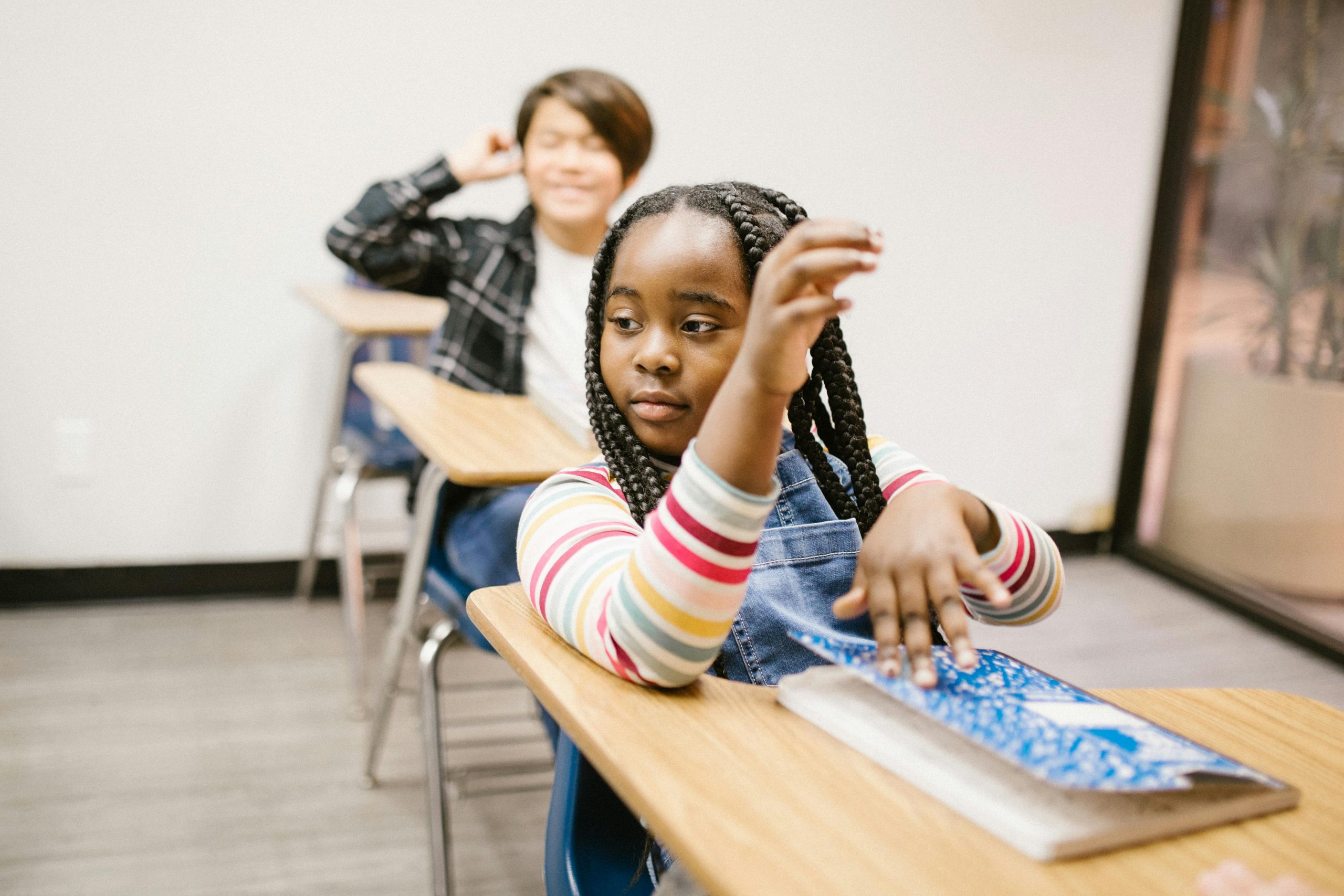When working with kids, the phrase “That’s not fair!” echoes through classrooms everywhere. Whether it’s about who got to be line leader, who got a sticker, or who got a shorter assignment, fairness is a hot topic. And when it comes to explaining differentiation, accommodations and modifications to students, teachers face a real challenge.
We know that fair doesn’t always mean equal, but for our students—especially in the elementary years—that’s a tough concept to grasp. The good news? You can teach fairness in the classroom in a way that’s engaging, memorable, and even a little bit funny.
Teaching Fairness in the Classroom: The Teacher’s Perspective
As a teacher, you already know that every student in your class is different. One might be a deep thinker who struggles to decode text. Another can’t sit still to save their life but has a million creative ideas. Someone else is managing big feelings about their parents’ divorce.
The social, emotional, and physical needs in your classroom are as unique as your students themselves. You do your best to meet them all through differentiation, accommodations, and modifications—but not every child understands why their classmate gets something different.
And even when you’re discreet, kids notice everything.
The Dilemma: “Why Did They Get That?”
Sound familiar?
-
- One student gets a shorter reading passage. Another immediately points out, “That’s not fair!”
- A student sits on a yoga ball to help them focus. Now everyone wants the yoga ball.
- Someone gets to read quietly in the cozy corner while others do math practice. Cue the jealous glances.
This is where helping students understand fairness becomes essential. Without it, students may see differentiation as favoritism instead of what it really is—meeting individual needs so everyone can succeed.
Giving Students an Experience to Rethink Fairness
You can explain fairness all day, but until students feel the difference, it’s just words. The best way to teach fairness in the classroom is through experience.
That’s where my all-time favorite activity comes in: The Band-Aid Lesson. This activity focuses on explaining differentiation, accommodations and modifications to students a way that they won’t easily forget.

Lesson Plan: Putting a Band-Aid on Fairness
What You’ll Need:
-
- A Band-Aid for each student
- A “ringer” (someone in on the joke—trust me, this key!)
- Optional: a doctor’s coat, stethoscope, and clipboard for full effect
Setting the Scene:
I like to ham it up—lab coat, stethoscope, the whole deal. I tell students they’re visiting the doctor (that’s me) for an injury. They can be as dramatic as they want—believe me, someone will have a “sword through the skull” injury before you know it.
Step 1: The Ringer
Your ringer is the first “patient.” Their injury? A paper cut. You solemnly put a Band-Aid on their finger. Simple. Done.
Step 2: The Patients Roll In
One by one, your “patients” come in with scraped knees, twisted ankles, or imaginary battle wounds. You listen carefully, nod wisely, and then… put a Band-Aid on their finger—in the exact same place as the ringer’s.
Cue confusion. Then outrage.
By the halfway mark, someone will absolutely yell, “You’re the worst doctor ever!” (If you’re lucky, another might threaten to sue for malpractice—yes, it happens!)
Step 3: The Reflection
Once everyone has been “treated,” gather them together. Ask:
-
- How did that feel?
- Did the Band-Aid help your injury?
- Was that fair?
Then drop the line:
“I gave everyone the same thing. Isn’t that fair?”
The protest will be glorious. And that’s when you get to flip the script.
Fair vs Equal: The Aha Moment
Here’s where you bring it home. You explain that a good doctor doesn’t give everyone the same treatment—only what each patient needs. And the same is true for teachers.
That’s explaining differentiation, accommodations and modifications to students in a way they’ll never forget.
You’re not being unfair when one student gets extra time, a reading aid, or a different assignment. You’re being a fair teacher—one who meets each student where they are, just like a doctor treats each patient’s specific condition.
Explaining Your Role as a Teacher
At this point, I tell my students:
“My job is to figure out what each of you needs to grow. That means I’m not always going to give you the same thing—but I will always give you what you need.”
And just like a doctor wouldn’t discuss a patient’s treatment with someone else, I won’t share why a classmate gets something different. That’s between me and that student.
If someone sees another student getting something special, I remind them:
“You wouldn’t want everyone knowing about your doctor visit, right? So we respect each other’s privacy in the classroom, too.”
That’s teaching fairness in the classroom through empathy and respect.

Encouraging Students to Advocate for Themselves
Once your students understand fair vs equal, it’s time to empower them. I tell them they can always schedule a “consultation” with me if they think a certain support might help.
During a consultation, they must:
-
- Explain what difficulty they’re having
- Suggest what support they think they need
- Describe how it might help them
This “consultation” builds real-world communication skills and gives students ownership over their learning. Sometimes their ideas are great. Other times, we adjust. But either way, they learn that fairness involves dialogue, not demands.
Helping Students Understand Fairness Builds Empathy
Every year, the Band-Aid activity reminds me why I love explaining differentiation, accommodations and modifications to students. It transforms the “That’s not fair!” moments into empathy and understanding.
Students start to see that fairness isn’t about getting the same thing—it’s about getting what you need to succeed. And when they start advocating for themselves and respecting others’ needs, your classroom becomes a place where equity thrives.
Real Teachers, Real Students, Real-World Lessons
I do the Band-Aid activity every year because it perfectly captures my teaching philosophy: Real teachers, teaching real students for the real world. Fairness isn’t easy to teach, but it’s one of the most powerful lessons we can give our students.
So the next time you hear, “That’s not fair!”—smile. You’ve got the perfect response ready.
For more ideas on creating experiences that challenge student thinking, read my post Tackling Student Misconceptions. It’s all about helping students reconstruct their understanding through real-world learning moments.

